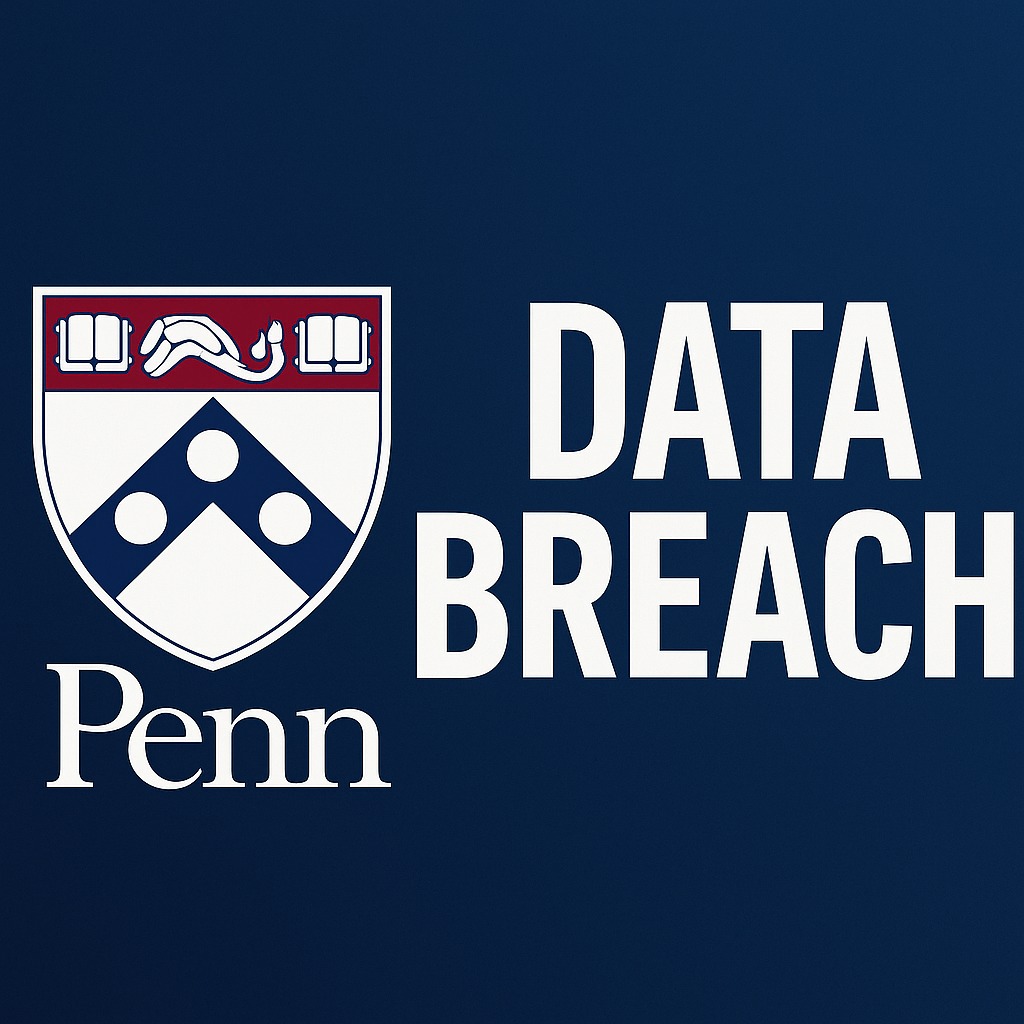University of Pennsylvania Unclaimed Breach Details
Organisation: University of Pennsylvania (Penn)
Incident date: October 31, 2025
Nature of incident: Mass-fraudulent email campaign purporting a data breach; hacker claims of data theft under investigation.
Status: Investigation ongoing; school says no confirmed core systems breach yet.
Reported by: multiple sources, including The Daily Pennsylvanian, TechCrunch, Bleeping Computer, Rescana, The Record, and Fox 29 Philadelphia.
What happened
Halloween night at the University of Pennsylvania turned unexpectedly chaotic when thousands of students, alumni, and donors received a bizarre email that appeared to come straight from the university itself. The subject line was blunt: “We got hacked.”
The message — sent from what looked like official Penn addresses linked to the Graduate School of Education (GSE) — accused the Ivy League institution of “elitism” and claimed the hackers had stolen data belonging to more than a million people. The email even alleged that Penn had violated federal privacy laws and defied the Supreme Court’s affirmative-action ruling.
For a few tense hours, the university’s community was left wondering if one of America’s oldest and most prestigious schools had actually been compromised. But Penn quickly responded, calling the emails fraudulent and confirming that, so far, no internal systems show signs of a genuine breach.
What investigators do know is that the messages were distributed through connect.upenn.edu, a legitimate mass-mailing domain powered by Salesforce Marketing Cloud — suggesting that someone, somehow, gained access to a system used to reach thousands of recipients in one go.
What data may be affected
The individual or group behind the stunt claims to have accessed records for roughly 1.2 million individuals, including students, alumni, and donors. According to their statements, the data includes names, racial or demographic details, donation histories, and even estimated net worth figures, a combination that, if true, would represent a significant exposure of sensitive personal and financial information.
But so far, there’s no proof. No sample data has surfaced, no leaks have appeared online, and Penn hasn’t confirmed that any files were actually taken. University officials say they are still working with cybersecurity experts to determine what really happened and to determine whether this was a case of mass phishing, unauthorized access, or internal system abuse. The claims come from the alleged attacker’s statements.
Attack vector & technical details
Initial analysis suggests a compromise of the school’s bulk email system, rather than its core IT infrastructure. The attacker appears to have hijacked Salesforce’s Marketing Cloud platform or an account connected to it, allowing them to send mass, legitimate-looking messages.
That would explain why so many recipients saw a message that technically did come from a valid “upenn.edu” sender address, even though its contents were fake. It’s a subtle, clever way to weaponize trust — exploiting a communications tool, not a server or database.
Researchers tracking the case say the techniques involved may align with common phishing or credential-abuse tactics, but there’s no sign of malware deployment or ransomware activity. For now, this appears less like a smash-and-grab hack and more like a reputational sabotage campaign masquerading as one.
Impact & risks
Even without confirmed data theft, the fallout has been significant. Students and alumni flooded social media with screenshots and questions. Donors — particularly those mentioned in the hacker’s claims — began reaching out to university staff for reassurance.
For Penn, the reputational damage alone is real. A university that manages billions in endowment funds and vast amounts of alumni data can’t afford to appear vulnerable, especially not through a system as visible as its official mailing lists.
The bigger lesson is clear: in 2025, trust itself is an attack vector. When a message comes from a familiar institutional address, most people won’t stop to verify it — and that’s exactly what this incident exploited.
Organisation’s response
Penn’s IT security and incident-response teams moved fast to contain the issue, isolate the compromised service, and warn the community. In public statements, the university stated that the emails were “fraudulent” and not indicative of any verified breach. It also urged recipients to delete the messages and avoid interacting with any follow-up communication that references them.
A notice briefly appeared on the Penn website, alerting users and directing them to the IT help desk for support. As of this writing, the university has not confirmed that any personal data has been exfiltrated or posted elsewhere online.
What you should do if you’re affected
If you study or work at Penn — or you’ve donated to the university in the past — the safest move is to stay alert. Delete any suspicious messages, even if they look official. Be cautious about any “updates” claiming to offer information about the breach. Also, ensure that two-factor authentication is enabled for your email, alumni, or donor accounts.
While there’s no verified evidence of leaked data, this type of incident often sparks follow-up phishing campaigns that exploit confusion and fear. Treat any new messages referencing “the hack” as suspicious until the university confirms their legitimacy.
Key takeaways
What happened at Penn is a textbook example of how digital trust can be weaponized. The attacker didn’t need to hack into servers or deploy ransomware. They exploited an existing communication channel, one that students and donors are conditioned to trust implicitly.
For institutions that rely on third-party marketing or communication tools, the message is unmistakable: access control, auditing, and outbound security policies are just as important as firewalls and antivirus systems. A compromised mailing account can tarnish a reputation as effectively as a full-blown breach.
What’s next
As the investigation continues, Penn’s security team is expected to publish findings once forensics confirm how the messages were sent and whether any sensitive systems were touched. Meanwhile, cybersecurity analysts are watching closely — not only because the incident involves a major university, but because it demonstrates a trend in modern threat activity: attacking credibility rather than code.
Whether this was hacktivism, vandalism, or something more coordinated remains unclear, what’s certain is that it will serve as a case study in how sophisticated attackers — or even trolls — can turn a simple email platform into a megaphone for chaos.
Worried about your online data? Run a leak check now at Am I Hacked and protect your online security today.

